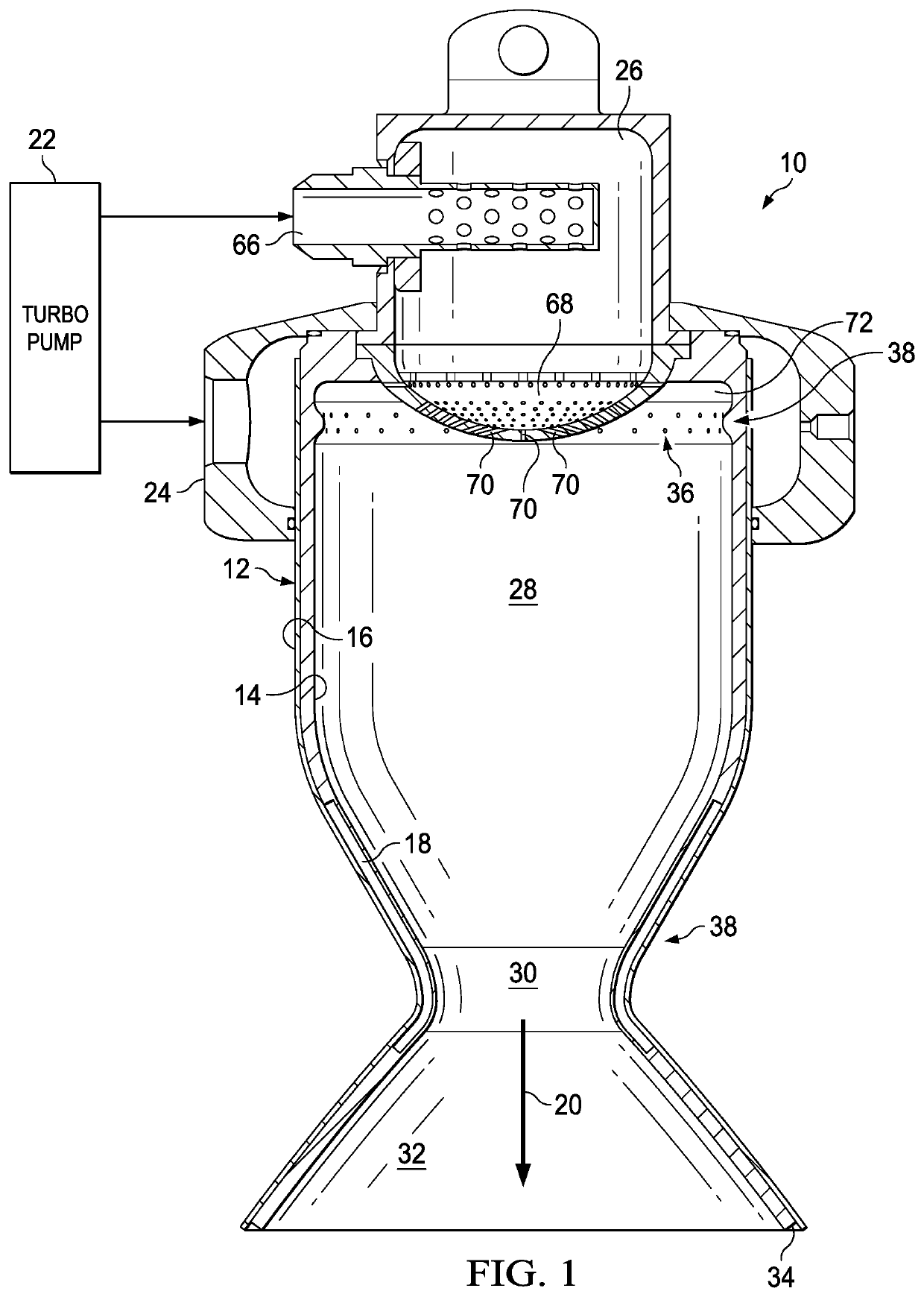Liquid rocket engine cross impinged propellant injection
a technology of propellant injection and liquid rocket engine, which is applied in the direction of machines/engines, cosmonautic vehicles, lighting and heating apparatus, etc. it can solve the problems of high temperature fuel located proximate the combustion chamber that does not mix efficiently with lower temperature fuel, turbopump size, propellant consumption, etc., to reduce the size of the turbopump, reduce the weight and propellant consumption, and increase the weight of the payload.
- Summary
- Abstract
- Description
- Claims
- Application Information
AI Technical Summary
Benefits of technology
Problems solved by technology
Method used
Image
Examples
Embodiment Construction
[0028]Variation in depth of cooling channels integrated in a liquid rocket engine thruster body mixes thermally-stratified layers of propellant flow passing through the cooling channels to improve thermal rejection from the thruster body compared against conventional cooling channels. For example, variations in cooling channel depth includes repeated continuous patterns, such as wavy cooling channels having periodical variable depth of a sine wave form. In one example embodiment, wavelength and amplitude of a cooling channel surface are proportional to an average cooling channel depth. A sinusoidal wave surface shape along a cooling channel destroys coolant stratification by moving hot layers from lateral surfaces near a thruster body interior surface and mixing the hot layer of coolant with cooler layers so that the bulk temperature of the coolant is made uniform and thermal transfer from the thruster body interior surface to the coolant increases. The overall effect is to improve ...
PUM
 Login to View More
Login to View More Abstract
Description
Claims
Application Information
 Login to View More
Login to View More - R&D
- Intellectual Property
- Life Sciences
- Materials
- Tech Scout
- Unparalleled Data Quality
- Higher Quality Content
- 60% Fewer Hallucinations
Browse by: Latest US Patents, China's latest patents, Technical Efficacy Thesaurus, Application Domain, Technology Topic, Popular Technical Reports.
© 2025 PatSnap. All rights reserved.Legal|Privacy policy|Modern Slavery Act Transparency Statement|Sitemap|About US| Contact US: help@patsnap.com



